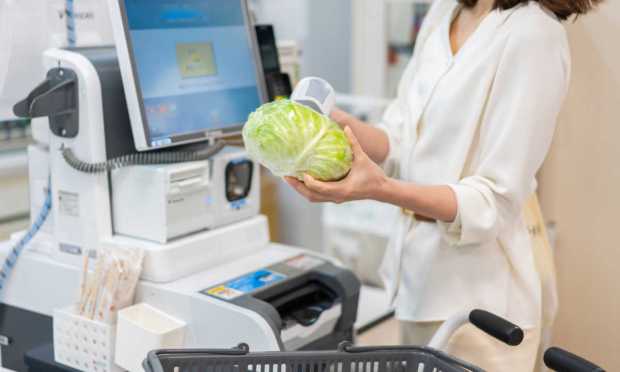
Grocers are increasingly bringing connected technologies into their stores to merge the physical and digital commerce journeys.
More than looking to either eCommerce channels or brick-and-mortar, grocers are targeting omnichannel customers to boost engagement and sales. As JJ Fleeman, CEO of Ahold Delhaize’s U.S. business, reportedly stated at the recent Groceryshop conference, omnichannel shoppers spend more per purchase and are more loyal.
Consequently, from smart carts to digital price tags to scan-and-go apps to mobile discounts for in-store purchases, grocers are boosting the physical experience with tech-powered capabilities.
Grocery technology giant Instacart, for its part, has been expanding its in-store digital offerings, most recently adding new features to its Caper Cart self-checkout smart shopping carts. In the company’s Form S-1 with the Securities and Exchange Commission (SEC) for its recent initial public offering (IPO), Instacart cited in-store innovation as a key growth area.
“We began with delivery but have since introduced pickup and in-store capabilities,” the company said in the filing. “To enhance the in-store experience, we offer AI-powered Caper Carts in select stores to help customers easily navigate stores and check themselves out without manually scanning items. We plan to continue to invest in new fulfillment and in-store options.”
Capabilities that connect consumers’ in-store behaviors to a digital profile, as PYMNTS’ Karen Webster observed in a feature, can help tech providers such as Instacart place themselves at the center of the omnichannel grocery experience.
“Although not yet at scale — and not yet at the level of a biometric identity a la the Amazon Palm Pay experience — log in with Instacart at the grocery store could be a first step in the direction of giving consumers a cross-channel, personalized online grocery identity,” Webster explained.
Amazon, for its part, is once again expanding its brick-and-mortar presence after closing many stores, most recently opening a new Amazon Go location equipped with Just Walk Out technology in Puyallup, Washington, last week, according to area publication The News Tribune.
Digital is becoming an increasingly relevant part of the grocery industry. PYMNTS Intelligence from the report “Consumer Interest in an Everyday App,” created in collaboration with PayPal, revealed that of the 86% of consumers who had purchased groceries in the last month, 45% purchased groceries both by using connected devices and via more traditional channels.
For the most part, grocers are eager to meet consumers’ digital demand both online and in stores, according to PYMNTS Intelligence from the study “Big Retail’s Innovation Mandate: Convenience and Personalization,” created in collaboration with ACI Worldwide, which drew from a survey of 300 retailers across the United States and the United Kingdom.
The report revealed that 79% of grocers think consumers would be very or extremely likely to switch merchants if not given access to barcode and QR code scanner apps. Plus, 68% said the same of alternative in-store payment methods, and 61% of self-service kiosks.
Yet not all grocers are quick to get on board with digital technologies. Take, as a counterexample, Trader Joe’s, a grocery chain with more than 500 locations that has kept the in-store journey fairly traditional while eschewing eCommerce channels and in-store digital technologies such as self-checkout.
“It’s not fun,” Bryan Palbaum, the company’s chairman and CEO, said of self-checkout on an episode of the grocer’s Inside Trader Joe’s podcast. “… I have fun bagging groceries and working at the register. Self-checkout is work. I don’t want that.”